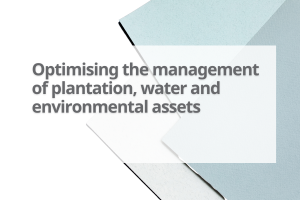Purpose
The research aimed to improve forest management by applying advanced remote sensing technologies. It aimed to help plantation growers assess resources, monitor tree health and nutrition, and detect weeds.
Summary
This multi-year research project aimed to improve forest management by applying advanced remote sensing technologies. Researchers focused on three key themes: optimising resource assessment using high-resolution data, mapping tree health and weeds, and managing large datasets. They used Unmanned Aerial Vehicles (UAVs), airborne and satellite platforms to collect data and evaluated tools based on cost-effectiveness, accuracy, and integration with existing systems. The team successfully adopted dense LiDAR and photogrammetric data, while also exploring the potential of hyperspectral sensors. By combining LiDAR and spectral data, they increased the depth of forest insights. They applied novel processing methods and machine learning to extract meaningful information from softwood, hardwood, and native forest datasets. The project demonstrated how remote sensing and data analytics can transform forest management and provided practical tools and recommendations for industry use.
Benefits to the Forest and Wood Products Industry
The project demonstrated how remote sensing and data analytics can transform forest management and provided practical tools and recommendations for industry use. It demonstrated that:
- Growers can use drones and LiDAR to map every tree, improving forest inventory accuracy and reducing the need for manual fieldwork.
- Companies can detect nutrient deficiencies and weed infestations early using hyperspectral imaging, helping them act quickly and protect tree health.
- Growth and yield can be predicted more accurately by combining remote sensing data with machine learning models, leading to better planning and cost savings.
- Organisations can manage large datasets more efficiently through cloud-based systems, making it easier to store, share, and analyse forest data securely
Acknowledgement
This work was supported by funding provided to Forest and Wood Products Australia (FWPA) to administer the National Institute for Forest Products Innovation program (NIFPI).
Funding for the program was provided by the Australian Government, the Tasmanian Government and Australian forest and wood products industry.



